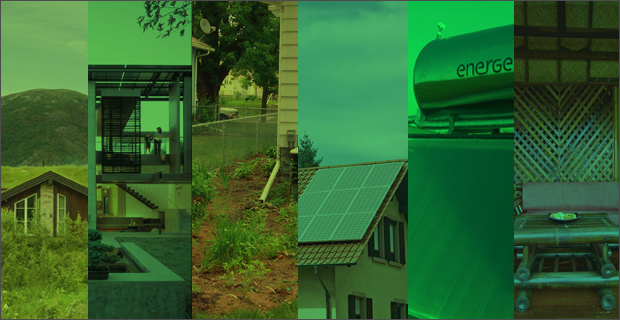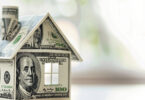The green home market is growing. How can CRSs take advantage and help clients get the houses they want?
By Gayle Bennett
As head of Sheriff Architecture Studio in Los Angeles, Garth Sheriff has specialized in green architecture for more than 20 years. In the last 10 years, hes seen the green homes market grow, which he attributes to the increasing ease of building green.
The enthusiasm is the same as 10 years ago, but the commitment to products is greater, Sheriff says. Ten years ago, his green home clients wanted to use green building products, but they didnt because it was more difficult and expensive to do so. They were saying, I cant take a look at green building solutions at this time because I dont think its as affordable, as obtainable or as easy to use. Thats changed.
ITS NOT EASY LISTING GREEN
If a house has multiple green features but those attributes arent listed in the MLS, does the house really have them?
The inability to market a homes green features in the MLS is a problem that Deb Greene, CRS, with Coldwell Banker Burnet in Minneapolis, has run into. In our MLS, we dont have anything that would signify that, yes, this is a green house. As the consumer, if I said to my REALTOR®, Im interested in a sustainable property, and I want geothermal heat and this, this and this, there was no way of going into MLS and finding it.
Also tricky is the appraisal process for such homes. Because our MLS does not include those green features, how can an appraiser know to give it the value that it truly is worth? Greene says. This will be an area we need to improve on, quantifying and improving the accuracy of appraisals for clients and lenders.
The Green REsource Council, a subsidiary of the National Association of REALTORS®, provides resources to help fix this problem.
A toolkit for greening the MLS and green MLS examples are available at the Green Resource Council.
The green home market growth isnt just anecdotal. The most recent SmartMarket report from McGraw Hill Construction (now Dodge Data & Analytics) found that after faltering during the housing downturn, the single-family home green market will double between 2013 and 2016 going from $37 billion (27 percent of the market) up to $101 billion (33 percent of the market). Further, the report projects that more builders will be building green by 2018: The percentage of builders with at least 15 percent of their projects green will grow from 62 percent in 2013 to 84 percent in 2018.
Not only is this market sector growing, its also lucrative, since green homes tend to sell for higher prices than conventionally constructed homes. CRSs interested in tapping into this client base will want to understand the most popular green features, the designation programs, and how to best attract and serve clients keen on going green.
Who Are Green-Home Clients?
Brenda Nunes, with Keller Williams Realty in Kirkland, Washington, knows the green home market well. She not only has the Green designation from the National Association of REALTORS®, she teaches NARs three-day Green Designation Courses. She works in Seattles eastside and estimates that 10 to 20 percent of her clients find her because of the Green Designation, but she ends up helping all her clients get the green features they want.
Her green clients fall into three subsets: clients with health issues who are particularly sensitive to chemicals, mold and dampness; efficiency-focused clients who are willing to pay more upfront to save money on energy costs down the line; and clients who are concerned about their homes impact on the environment.
As a green real estate agent, you have to understand that you arent selling to the same person, Nunes says. For example, environmentally focused buyers will care about energy-efficiency just like the efficiency-focused clients, but they will also care about where products come from and their effect on the world. They are the people who can maybe afford granite, but arent going to want granite because of the mining practices.
Deb Greene, CRS, with Coldwell Banker Burnet in Minneapolis, also has NARs Green designation and has taught the course. She says that about 30 percent of her clients are looking for at least some green features in a home, and they generally pay about a 30 percent premium for their homes particularly if they are buying a home with a geothermal heat pump.
To help these clients, she stays up-to-date on green building products. At each home show I go to, I see more and more products, vendors and options. Im just amazed at how much more research has been done, how many improvements there have been to products and how much more educated the vendors and the builders are. As REALTORS®, we need to be better informed and do the research in our marketplace so we can better educate the consumer.
More Info
Sunny Days Ahead
As the cost of solar energy continues to go down, that’s going to be a huge opportunity,” says Steve Saunders, CEO of energy consultant US Eco Logic.
What Do They Want?
Sheriff says that his clients are looking for green building solutions that exhibit three characteristics. The first is attainability. For example, a client might want insulation that doesnt have chemicals in it, but if you have to wait for it for six weeks and special order it, thats not as appealing, he says. The second criteria is effectiveness: Does it do the job at least as well as the non-green building product? The third criteria is affordability, which he says is less important than attainability and effectiveness. Now clients are sophisticated enough to look at the lifecycle costs and how much they save over the life of a product, he says.
Energy-efficiency features with their cost savings down the road continue to be very popular with homebuyers. The EPA estimates that homeowners can typically save up to 10 percent of total energy costs by air-sealing their homes, and adding insulation to attics, floors over crawl spaces and accessible basement rim joists. Investing in efficient HVAC systems and tankless water heaters are other ways to cut energy costs.
Steve Saunders, CEO of US Eco Logic, works with builders and developers to help them build energy-efficient and otherwise green buildings. He has seen builders and buyers focus a lot on energy efficiency over the last decade, and he doesnt see that stopping anytime soon.
Saunders predicts that the next big green home trend will be indoor air quality, meaning better ventilation and use of building products that have lower volatile organic compounds and less off-gassing (the emission of noxious gases from building materials).
Do Green Standards Matter?
There are three main green home programs: Energy Star (the Environmental Protection Agencys designation), ICC 700 National Green Building Standard (the National Association of Home Builders designation) and LEED for Homes (the U.S. Green Building Councils designation).
If the green home market is growing, does that mean interest in these designations is growing? Nunes isnt so sure. In the early days, everyone was trying to sell the certification the ratings and the star levels, he says. Now I see [homebuyers] looking at the attributes of the property: Why does this designation matter? What are the benefits of the features?
Saunders sees green designations doing better in apartment complexes and the commercial sector than in the single-family home market. However, Energy Star homes are a significant portion of new construction in Texas. He says that before the downturn, new construction was probably around 40 percent Energy Star certified; he estimates that its at 25 percent today.
While these homes command a premium, exactly how much of a premium depends on all the features and the location, of course.
A 2012 study by researchers at UCLA and UC Berkeley found that houses in California that had a green designation sold for 9 percent more than homes without such a designation.
Regardless of certification or designation, Nunes sees more overlap between clients looking for well-built homes with quality components and clients interested in buying homes with green features.
If you are buying quality, chances are you are buying a product or system that scores pretty high on the green scale, she says. Who doesnt want a healthy, high-quality, energy-efficient home?
Learn more from the NAR field guide to Green Homes and Mortgages at REALTOR.org.








